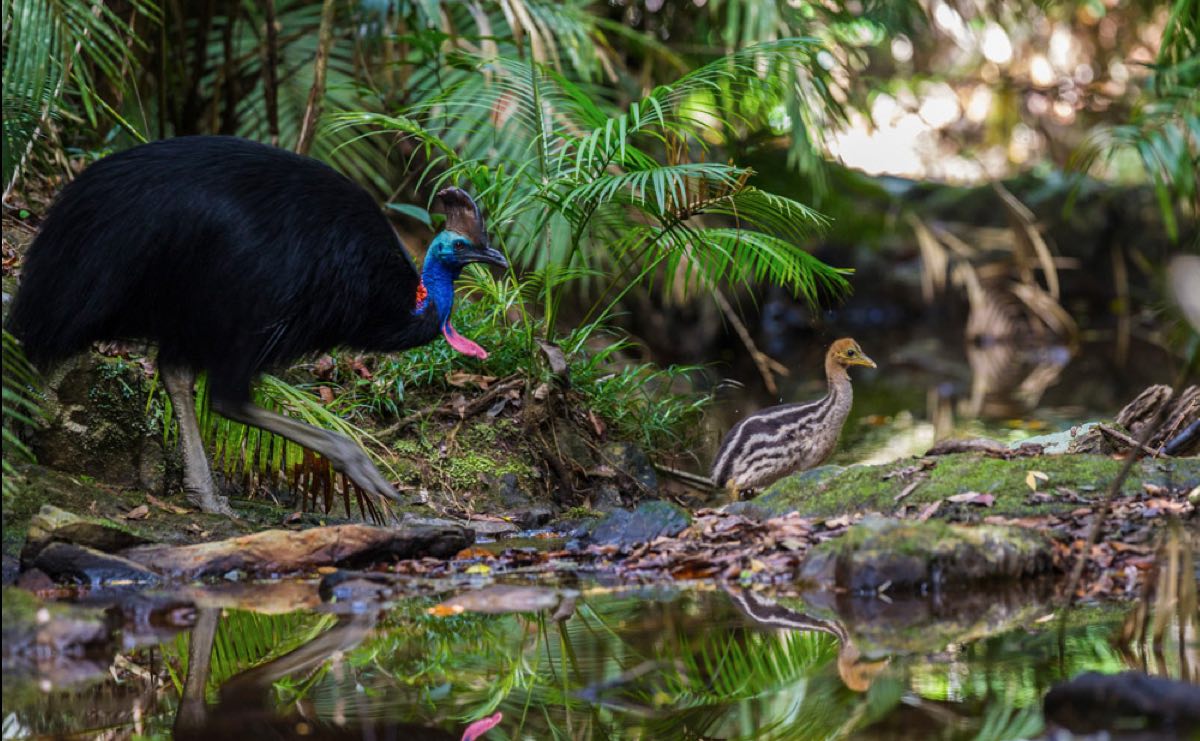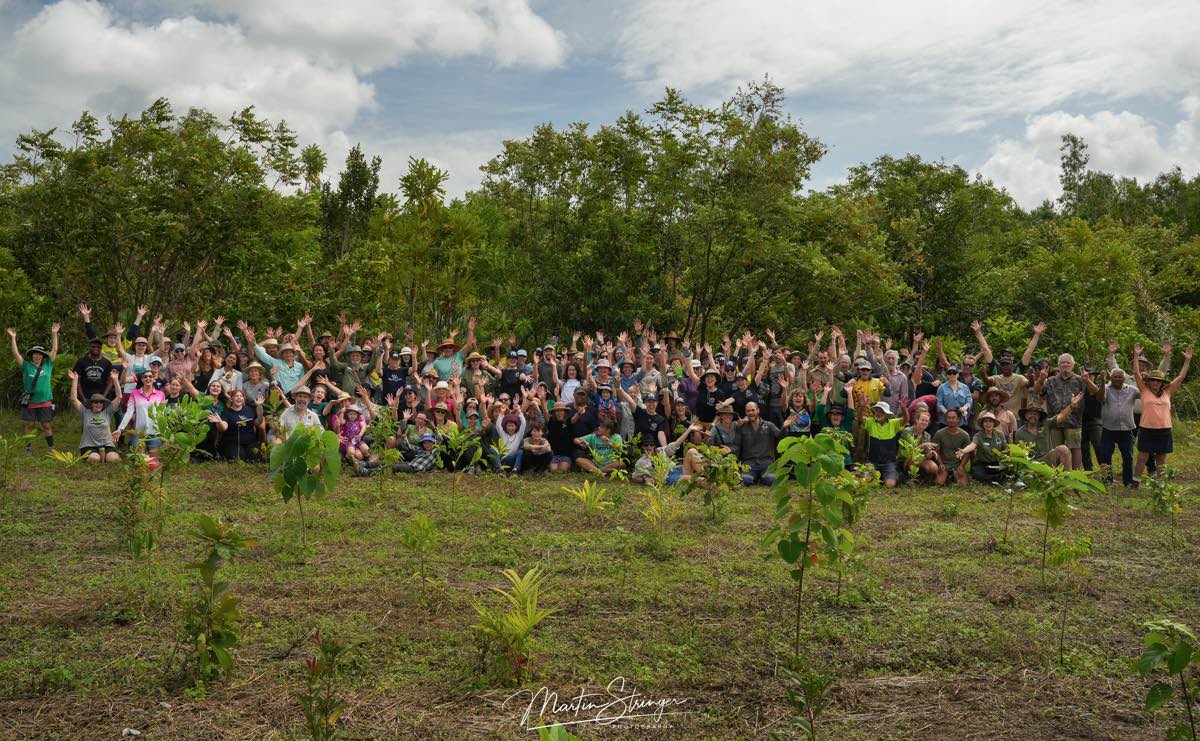Discover hidden connections of the rainforest
Natural networks helping restore the Daintree

Some types of fungi are essential to plants for providing nutrient support
Image credit © Martin Stringer
You may have come across the fascinating theory of ‘mycorrhizal networks’. These underground networks; hidden connections, created by the mycelium of fungi linking with plant roots, are sometimes described as the ‘internet of the forest,’ allowing trees and plants to share nutrients, water, and even vital information.
While the scientific debate continues, what’s undeniable is the importance of interconnectedness—whether in forests or conservation efforts. It’s this idea of connection and collaboration that underpins today’s 25th-anniversary message.
Just as the rainforest thrives through its hidden connections, so too does Rainforest Rescue rely on a vast network of passionate individuals—people like you—who fuel our mission.
GET CONNECTED
In today’s message, rather than just one, you’ll find lots of links that will take you to more information about an organisation or topic. We hope you find these valuable, as we believe that knowledge and understanding is crucial to better responding to the biodiversity and climate crises our planet is experiencing.
A network with deep history
Traditional custodianship of the Julaymba/Daintree bioregion has been practiced for many thousands of years by the Eastern Kuku Yalanji people. Their network was across many clan groups local to particular areas of the region. Understanding of the environment, climate and changes to the land, sea and sky was (and still is) passed on as Cultural knowledge through communities.
Disruption to this network took place less than two hundred years ago with logging and land clearances, but in the last forty or so years there has been a sense of ‘healing’ taking place as reconciliation interweaves with conservation and restoration.

Cassowaries have benefitted from local community conservation activities
Image credit © Christian Ziegler
A network that heals
In the previous edition of our 25th messages, we learnt of the people who were active in the Daintree Blockade and the ‘first’ conservation groups as the area received UNESCO World Heritage status. Two of which, the Daintree Rainforest Foundation and Daintree Cassowary Care Group, worked in close proximity to protect unprotected rainforest and raise awareness of the threats to Cassowaries from human impact. Both of these organisations connected into Rainforest Rescue, providing generous donations to fund the purchase of unprotected properties in the Daintree that are now protected forever as Nature Refuges.
Around this time, Rainforest Rescue was also a member of the Cassowary Recovery Team, a group of organisations that implemented the Cassowary Recovery Plan, to reverse the decline of this majestic bird. Without these actions, we wouldn’t celebrate World Cassowary Day each September! Another of our allied organisations, CAFNEC, continues to champion this special day to ensure Cassowaries are a part of our lives. Perhaps more importantly, without these actions we wouldn’t have experienced the halt in declining numbers. Cassowaries are recovering.
On the ground in the Wet Tropics region, Rainforest Rescue worked alongside dozens of community organisations, many of which focused on specific issues or taxons, like those helping Spectacled Flying-Foxes. Together we shared knowledge, access and actions. We were part of a wider network that was actioning a plan, the Wet Tropics Plan. The Daintree is one of many areas of Queensland tropical rainforest that covered a much larger, continuous footprint in this part of Australia. Our hope is that the habitat continues to recover and grow in size once again.

Together we’re a powerful network of people who care deeply about our natural environment
Image credit © Martin Stringer
A network which is growing
To realise this hope, we are now part of an alliance – the Wet Tropics Restoration Alliance. Now we work alongside organisations like Terrain, Climate Force, Daintree Life and Jabalbina Yalanji Aboriginal Corporation to achieve restoration at a bigger scale than ever, connecting up the fragments of ancient rainforest for its unique flora and fauna to thrive. Our restoration techniques on properties such as those protected as sanctuaries through Wildlife Land Trust are informed by decades of field work from our connections with Firewheel Nursery and Big Scrub Rainforest Conversancy, who are fighting to reverse the astonishing loss of rainforest in another region of Australia.
And we need this restoration and reconnection to happen. Our nation is one of the worst offenders in biodiversity loss, with a very poor record of protecting its unique wildlife. As a developed nation, it is the only one to still appear on a list of global deforestation fronts. Evidence is mounting that these trends will continue, with climate change threatening endemic rainforest species. Because of this our work connects not just to the rainforests, but to environments that connect with the forests themselves – mangroves, river systems and coral reefs. What impacts one will have a ripple effect on the others. Australia has a long way to go to meet the UN targets for protecting and restoring habitats by 2030.
A network that is global
Unlike the mycorrizhal network, our connections cross the oceans. We are halfway through the UN Decade of Ecosystem Restoration and Rainforest Rescue has supported and aligns with programs across the globe through its connections. There are commonalities between the Daintree’s story and others in biodiverse-rich areas that are under threat on every continent. We intend to share our learnings and continue to champion regenerative practices and habitat protection. It’s in our nature to do so.
This message is both a reminder and a thank you. One of Rainforest Rescue’s founders once remarked that ‘we wouldn’t have lasted five minutes without our network of supporters’. And here we are, 25 years on.
However you contribute to Rainforest Rescue, as a donor, volunteer, partner or ally, your actions and generosity are the fuel that keeps us connected and contributing to the essential work our planet needs.
Thank you. Please stay in touch through our ‘rainforest network’.
The Rainforest Rescue team
Want more good Rainforest news in your life?
Subscribe to our eNews | Follow us on Instagram | Like us on Facebook | Subscribe to our YouTube channel
Help Protect Rainforests Forever
Donate to Protect Rainforests Forever | Become a Rainforest Guardian for as little as $2 a month | Partnership Options

